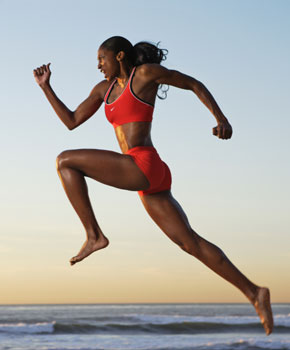
Core stabilization exercises aren’t sexy, but they’re critically important to enjoying everyday living.
- Real-life benefits: A strong core supports good posture and proper joint alignment. Good posture not only makes you look and feel better but also prevents back pain. A strong core allows you to stand for long periods of time without pain or survive sitting at your desk and working at your computer for long hours.
- Injury prevention: Good posture places the least amount of stress on your joints. Strong stabilizers keep your neck, shoulders, hips, and knees properly aligned to minimize wear and tear on your body. Strong stabilizers also let you use the strength in your arms and legs. For example, if you don’t have a stable shoulder joint, regardless of how strong your arms and back are, lifting items like a suitcase without hurting your shoulder may be tough.
- The “Feel Good” factor: Nothing boosts your confidence like great posture and moving from the center of your being. Standing up tall; facing life straight on. That’s what it’s all about.


